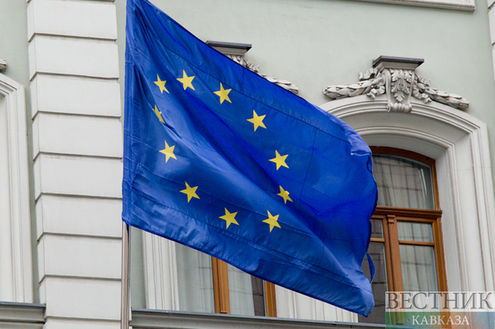This year, positive trends began to appear in the Armenian economy. According to official figures, in the first six months of the year the economic growth amounted to 7.8%, industrial growth - to 13%, growth in agriculture – to 8.1%, and growth in services - to 12%. The index of economic activity grew by 7.4% in January-May 2012 compared to same period last year and appeared to be higher than projected.
Let us note that economic growth of 4.2% and inflation of 4.5% are planned in the state budget for 2012. The current rates are certainly better than during the so-called crisis in 2010 and 2011, not to mention the year of 2009, when the fall in GDP was recorded at 14%. In 2010 and 2011, respectively, the growth rates of about 2.6% and 4.5% were recorded. The inflation rate has also decreased; in 2010 and early 2011 it reached a record of 8-10%. According to the recorded rates, inflation for January-July this year, compared to the same period last year, was 2.2%, and the monthly rate in July was a deflation of 1.5%.
"According to our estimates, this year the inflation rate by the end of the year will be recorded at slightly less than 4% if any other developments do not occur in the world market", - Vache Gabrielian, Minister of Finance, said.
For the first time in the last two years, the decline in prices of 1.5% is registered in the consumer market of Armenia in July. Food prices fell by 2.8%, the prices of non-food products – by 0.4%, the tariffs for services - by 0.1%. According to the National Statistical Service of Armenia, during 2010-2011, consumer prices in Armenia increased by more than 10%. There are increases of prices of almost everything: food, beverages, cigarettes, fuel, and services. In 2011, the food went up by 11.5%.
Tigran Davtyan, Minister of Economy, assured that Armenia's economic rates recorded in the first half of this year are positive and inspire hope that this positive trend will continue until the end of the year.
Despite this positive trend, however, many shortcomings of the Armenian economy continue to expose it to “corrosion”.
There is still a considerable difference between the volumes of exports and imports in favor of the latter. However, the government has promised to restore the industrial potential in order to increase exports, but money for this will come to the state budget only in 2013. As part of the implementation of this idea, the Government approved the strategy of export-oriented industrial policy.
More than 50%, and according to some reports, more than 70% of the economy remains in the "shadow": external transfers to individuals grew by 8.7%. Meanwhile, according to some experts, the transfers are another serious problem of the Armenian economy, which allows keeping the demand at a high level and causes the development of monopolies, to the detriment of small and medium businesses.
Another big problem is the outflow of capital from Armenia. "Capital flight is much more serious threat to the economy than the problem of small and medium-sized businesses. The exported capital could be used for the benefit of our economy. In calculating the amount of capital flight, there are certain difficulties. According to my calculations, this figure is close to the volume of transfers, that is, to 1 billion U.S. dollars ", - Tatul Manaseryan, the head of the research center "Alternative", Doctor of Economics, says.
It is possible that the presence of these and other problems has caused the fact that the Armenian leadership is seeking a new loan. Today in Armenia, one of the most actively discussed topics, besides the intention of "Gazprom" to raise gas prices for Armenia, is the information about the attempts of the Armenian government to raise new loans amounting to one billion dollars. However, the information is not officially confirmed, but it is also not disproved.
Director of the Caucasus Institute Alexander Iskandaryan believes that Armenia feels "investment hunger": "Since 2008, that is, with the beginning of the economic crisis in Armenia, the country has a lot of problems with money, that is, with the money that can cause the development of the economy. Accordingly, unless a loan is granted, the ratio of government debt to GDP in Armenia will increase. "
"The negative balance of payments is growing. The statements of export growth are lies, as well as the statements about the growth of GDP, because you can publish all sorts of data, taking into consideration the CTP and health insurance of the officials; there is not any real growth, it's just a soap bubble. The official declarations that the ratio of external debt to GDP is about 40% are also not true. Today, Armenia's foreign debt amounts to 7.3 billion dollars, i. e. more than 70% of GDP. And if Armenia does not find significant financial resources, it will be in the position of Greece as early as in 2013 ", - Grant Bagratyan, the former prime minister (1992-1996), Doctor of Economics, says.
According to him, the loan of $ 1 billion will delay the Greek scenario in Armenia for two years, that is default in Armenia will not occur in 2013, but, for example, in 2015. "Armenia should not rely on a loan at all. It is only necessary to stop the export of capital carried out by Armenian oligarchs. We do not need loans. Armenia is insolvent. Our state is a bankrupt, but capital is still exported from this state, and this should be seriously considered," – the former prime minister says.
According to some reports, the negotiations for a loan of the before-mentioned amount have been held between Yerevan and Moscow for several months. Yerevan has urgently appealed for help to Moscow, after the refuse of the European Union to provide financial aid to Armenia. In May, EU officials said that the EU will consider the request after the Armenian presidential elections scheduled for February 2013.
The loan which is the subject of the negotiations is not privileged. This is a loan with a floating interest rate which is quite close to the interest rates of commercial loans. On the other hand, on the basis of the foregoing, the Government of Armenia is forced to obtain these funds in order to stabilize the economy and to avoid a possible next round of social tensions on the eve of presidential elections; it could become a serious obstacle for the authorities to ensure the desired outcome of the vote for them. This proves once again that the majority of the processes taking place in Armenia in economic, environmental or social field are related to the policy; in this case the issue is related to the upcoming presidential election.
Probably today few people care about the questions about the terms of the returning of the loan and about the servicing of the loan even of half a billion dollars, taking into account its volume equal to half the state budget, is a considerable additional burden on the budget and a major obstacle to economic development of the country. The position of Russia remains unclear; it is not known when and if it would provide loans to Armenia.






